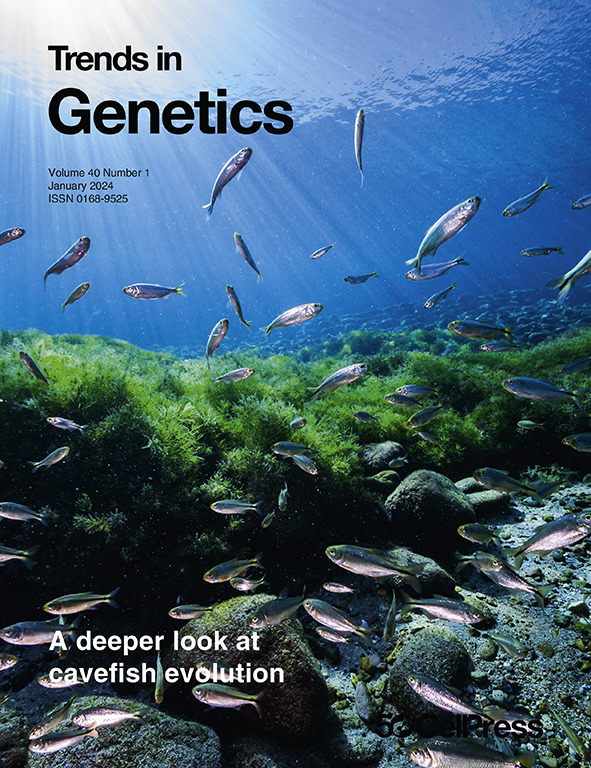DNA lesions piece together impossible trees.
IF 16.3
2区 生物学
Q1 GENETICS & HEREDITY
引用次数: 0
Abstract
DNA lesions can persist through multiple cell cycles, resulting in mutational strand asymmetry, multiallelic variation, and somatic mosaicism. But for how long do these lesions persist? Recent work from Spencer Chapman et al. shows that they can last for months to years, even arising from endogenous exposures in utero.
DNA损伤拼凑出不可能的树。
DNA损伤可以持续多个细胞周期,导致突变链不对称、多等位基因变异和体细胞嵌合。但是这些损伤会持续多久呢?Spencer Chapman等人最近的研究表明,它们可以持续数月至数年,甚至是由子宫内的内源性暴露引起的。
本文章由计算机程序翻译,如有差异,请以英文原文为准。
求助全文
约1分钟内获得全文
求助全文
来源期刊

Trends in Genetics
生物-遗传学
CiteScore
20.90
自引率
0.90%
发文量
160
审稿时长
6-12 weeks
期刊介绍:
Launched in 1985, Trends in Genetics swiftly established itself as a "must-read" for geneticists, offering concise, accessible articles covering a spectrum of topics from developmental biology to evolution. This reputation endures, making TiG a cherished resource in the genetic research community. While evolving with the field, the journal now embraces new areas like genomics, epigenetics, and computational genetics, alongside its continued coverage of traditional subjects such as transcriptional regulation, population genetics, and chromosome biology.
Despite expanding its scope, the core objective of TiG remains steadfast: to furnish researchers and students with high-quality, innovative reviews, commentaries, and discussions, fostering an appreciation for advances in genetic research. Each issue of TiG presents lively and up-to-date Reviews and Opinions, alongside shorter articles like Science & Society and Spotlight pieces. Invited from leading researchers, Reviews objectively chronicle recent developments, Opinions provide a forum for debate and hypothesis, and shorter articles explore the intersection of genetics with science and policy, as well as emerging ideas in the field. All articles undergo rigorous peer-review.
 求助内容:
求助内容: 应助结果提醒方式:
应助结果提醒方式:


